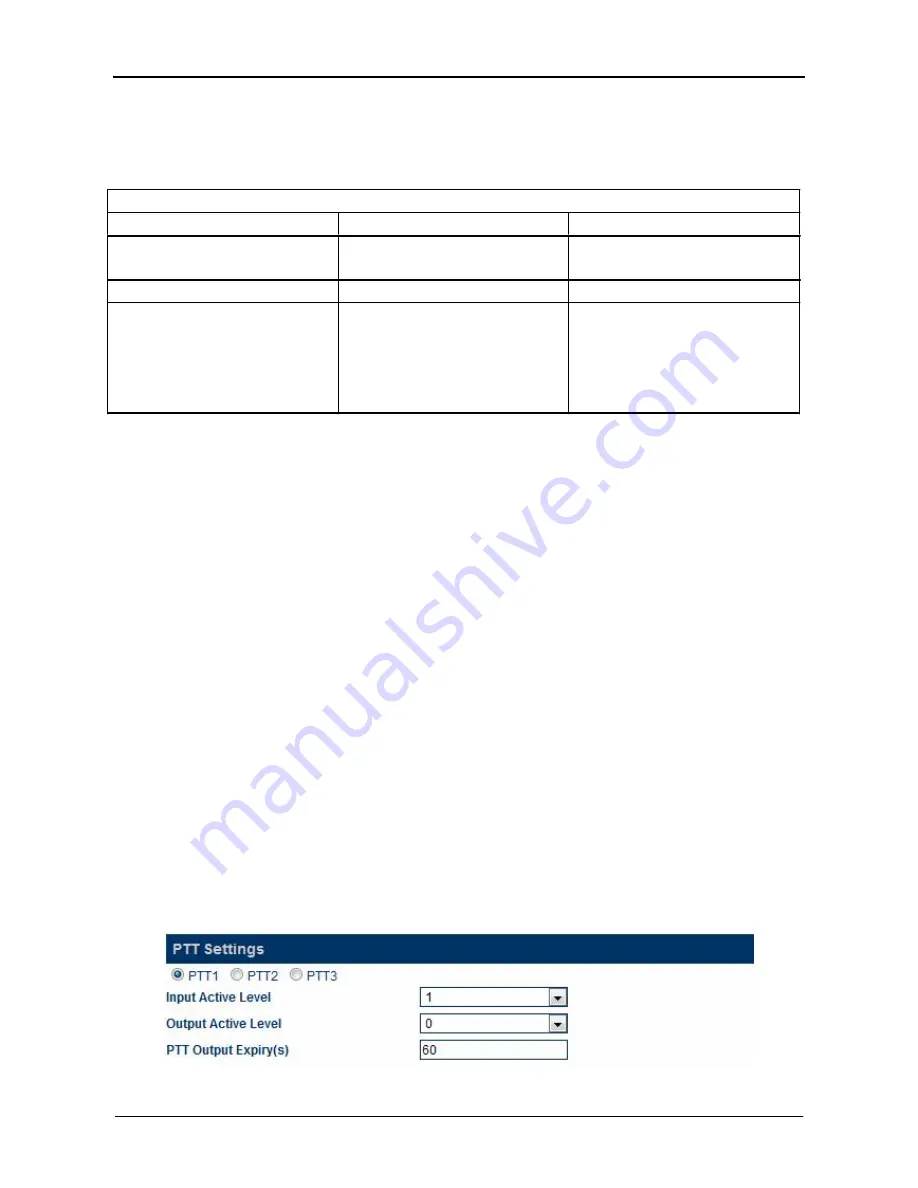
ROIP302 Series User menu
For peer-to-peer mode, only two RoIP302s are used for interconnection. One RoIP302 is defined
as a Host which supports a proxy mode for other RoIP302 (referenced as terminal) to register. The
table below describes how to program the key parameters.
Peer-to-Peer Mode Settings
Group SIP Number
SIP Proxy
Auto Dial Number
RoIP302 Host
Unique number assigned by the
user
Host IP or DDNS if enabled
Blank
RoIP302 Terminal
Unique number assigned by the
user
Host IP or DDNS if enabled
The Group SIP Number of the
RoIP for voice connection to be
established when a PPT signal
is active as defined in Group
Settings (Section x.x).
The Auto Dial Number is basically the number that the RoIP302 automatically makes a call to when
a PPT signal is active as defined in the Group Settings (Section x.x).
6.6
PTT Settings
This section defines the PPT Signal settings. RoIP302 supports up to 3 PTT ports and each PPT
consists of two control signal (PTT Input and Output). Difference radio terminals may have
different requirement on the PTT control signals. Please consult the User Manual of your radio
terminal for more information.
1. Input Active Level defines the active level for the PTT Input. Select “1” if the PTT Input is
active when the electrical level is high (+5V). Select “0” if the PTT Input is active when the
electrical level is low (0V).
2. Output Active Level defines the active level for the PTT Output. Select “1” if the PTT Output is
active when the electrical level is high (+5V). Select “0” if the PTT Output is active when the
electrical level is low (0V).
3. PTT Output Expiry (s) defines the maximum duration in second for the PTT Output to be active.
This means that the maximum transmit time for a voice channel is limited by the PTT Output
Expiry. This method is used to prevent a radio terminal to occupy the voice channel indefinitely.
The minimum value is 30.
www.dbltek.com












































